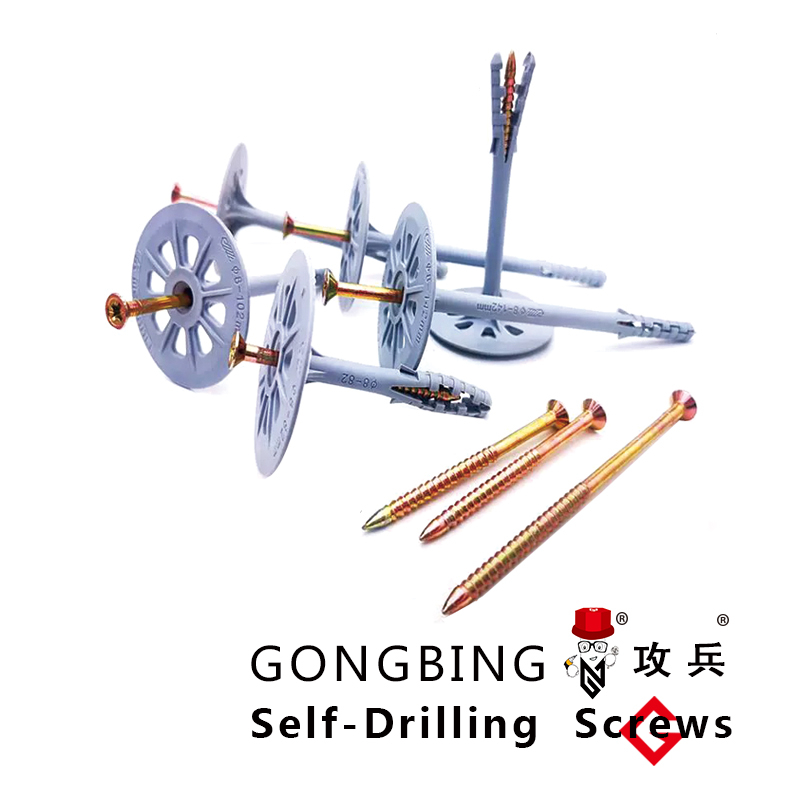Wedge Anchor Fasteners for Secure and Reliable Construction Applications
Understanding Wedge Anchor Fasteners The Essential Guide
Wedge anchor fasteners are critical components in construction and engineering, providing a reliable method of securing heavy objects to concrete structures. These robust fasteners are widely used in various applications, from anchoring machinery and equipment to installing railings and supports. In this article, we will explore the features, installation methods, benefits, and considerations associated with wedge anchor fasteners.
What is a Wedge Anchor Fastener?
A wedge anchor consists of a threaded bolt with a conical end and a wedge-shaped expansion clip. It is primarily designed for use in solid concrete, where it provides a secure hold by expanding against the walls of the drilled hole as the bolt is tightened. The wedge anchor is particularly valued for its durability and strength, making it ideal for heavy-duty applications.
Features of Wedge Anchor Fasteners
Wedge anchors come in various diameters, lengths, and materials to meet different project requirements. They are typically made from carbon steel with a zinc or hot-dipped galvanized finish, providing corrosion resistance for outdoor and humid environments. Some wedge anchors even come in stainless steel for applications that demand enhanced durability and rust resistance.
The design of a wedge anchor allows it to achieve a strong grip on the concrete, minimizing the risk of pull-out failure under heavy loads. This makes them suitable for both static and dynamic loads, which is integral in many construction projects.
Installation of Wedge Anchor Fasteners
Installing wedge anchor fasteners requires careful planning and execution. Here’s a step-by-step guide to installing them
1. Choose the Right Size Begin by selecting the appropriate size based on the load requirements and the thickness of the material to be anchored.
2. Drill the Hole Use a hammer drill to create a hole in the concrete. The diameter and depth of the hole should match the specifications of the chosen wedge anchor.
wedge anchor fastener

4. Insert the Anchor Place the wedge anchor into the hole, making sure the conical end is facing the bottom.
5. Tighten the Anchor Using a wrench, tighten the nut on the wedge anchor. As the nut is tightened, the wedge will expand against the sides of the hole, securing the anchor firmly in place.
6. Check the Installation Ensure that the anchor is flush with the surface of the concrete and that it is firmly secured.
Benefits of Wedge Anchor Fasteners
Wedge anchors offer several advantages that make them a popular choice for construction professionals
- High Load Capacity They are designed to bear heavy loads, which is essential for structural integrity. - Ease of Use The installation process is straightforward, requiring only basic tools and equipment. - Versatility Wedge anchors can be used in various applications, including securing machinery, installing handrails, and anchoring fences. - Corrosion Resistance Many wedge anchors are available with protective coatings, making them suitable for outdoor use.
Considerations When Using Wedge Anchor Fasteners
While wedge anchors are highly effective, there are some considerations to keep in mind
- Concrete Quality The integrity of the concrete is crucial for the anchor's performance. Poor-quality concrete may lead to anchor failure. - Proper Sizing Using an incorrectly sized anchor can result in poor performance or structural failure, so careful selection is essential. - Depth of Installation The anchor must be installed to the correct depth to achieve the intended load capacity.
Conclusion
Wedge anchor fasteners are an indispensable tool in the construction and engineering sectors. Their ability to provide strong and reliable anchoring solutions underlines their value in a variety of applications. By understanding their features, installation processes, and considerations, builders and engineers can ensure the integrity and safety of their structures using wedge anchors. Whether you are a seasoned professional or a DIY enthusiast, mastering the use of wedge anchors will enhance your projects' durability and performance.
-
Weatherproof Plastic Expansion Anchors for OutdoorNewsJun.06,2025
-
Sustainability in the Supply Chain: Eco-Friendly TEK Screws ProductionNewsJun.06,2025
-
Load-Bearing Capacity of External Insulation FixingsNewsJun.06,2025
-
Double Head Bolts: Enhancing Efficiency in Industrial MachineryNewsJun.06,2025
-
Corrosion Resistance in Chipboard Screws: Coatings for Wholesale DurabilityNewsJun.06,2025
-
Butterfly Toggle Bolts : Enhancing Structural ResilienceNewsJun.06,2025
